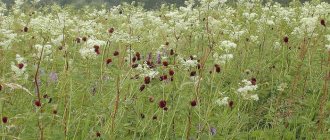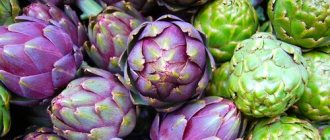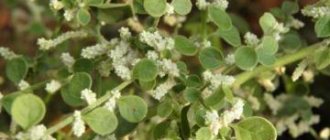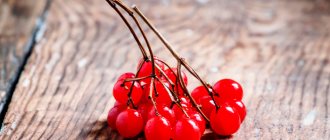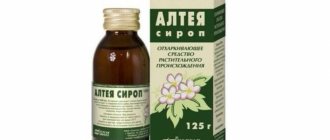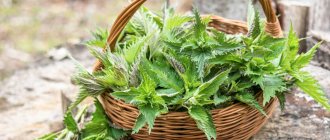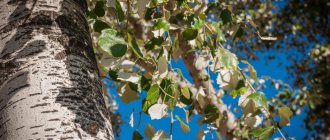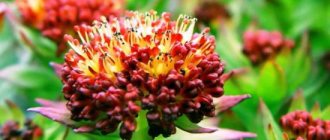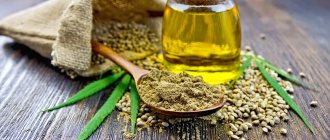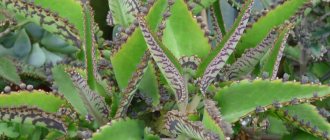The level of public awareness about the medicinal, nutritional and cosmetic properties of eucalyptus is extremely low. Every ordinary citizen knows that eucalyptus is the main dish in the diet of pandas, but no one has heard of the antioxidant and antibacterial effect of the plant. Few people imagine what eucalyptus looks like and what its potential power is.
Let's figure out what this plant actually is.
What does eucalyptus look like and where does it grow?
Eucalyptus is a heat-loving plant from the Myrtle family, native to Australia. Although the usual habitat of the crop is the tropics or subtropics, some high-mountain species tolerate frosts down to 20 °C.
Any soil is suitable for the growth of useful trees; some species are not harmed even by marshy soils. The plant is famous for its ability to easily withstand critical climatic conditions. Trees can grow directly from water, survive long droughts, and regrow after forest fires.
Thanks to the beneficial properties of eucalyptus, the plant has spread throughout the world. Since the end of the 19th century, different species have conquered Asia, Europe and the Americas. In Russia, useful giant trees take root only in the Crimea and several Black Sea regions of the Caucasus.
Eucalyptus trees develop very quickly, with the main growth occurring in the first 10 years after planting. This property makes the culture very useful for areas that require urgent landscaping. Most species have a straight, thick trunk. The periodically renewed bark can be smooth, covered with scales, folds, and fibers.
Depending on the variety, the crown can take on different shapes. The leaves have a lanceolate shape and are turned with their edges towards the sun, so they provide little shade.
Large flowers consist almost of only stamens and can be of the most varied colors: white, yellow, all shades of red to purple. The buds are collected in umbrellas or loose panicles. A useful property of flowers is that they attract a large number of bees.
The fruits, which resemble a ball, bell or box in different species, ripen within a year. Germination of individual seeds can exceed 10 years; individual specimens tend to germinate after many decades.
Popular types
Only a few species are suitable for growing indoors. Sellers rarely provide complete information about these flowers, but buyers who are plant lovers can easily distinguish one species from another.
- Ash eucalyptus is also called dollar eucalyptus for its silvery, ovate leaves that do not change shape throughout its life.
- The globular eucalyptus has yellow bark and blooms thickly.
- Gunni gives off almost no aroma. It can be recognized by its bluish tint, which eventually turns green. There are varieties with small leaves and more pronounced shades.
- Parvifolia is a spreading bush, surprising with a huge number of shoots. Its leaves are lanceolate and small, their color is dark green.
Eucalyptus varieties
The tallest recorded tree in the world belongs to the regal eucalyptus subspecies and reaches 100 m in height. At the beginning of the last century, the use of wood was in the production of paper from it. Today this type is used in construction and furniture making.
Cineria is a species that has taken root well in the European climate. In Russia, the useful plant is found on the Black Sea coast of the Caucasus. The species is often called ash or silver, due to the color of its rounded leaves. A useful, beautiful tree is often grown at home, and designers use it in interiors.
Eucalyptus globulus and rod-shaped have the greatest value for medicine. They are used for the production of pharmaceuticals in almost all countries where they grow. The benefits of eucalyptus leaves lie in their rich chemical composition and the presence of rare substances that can have a healing effect on the human body.
A few words about globular eucalyptus
The greatest medicinal value is eucalyptus globulus, rod-shaped and ash or silver eucalyptus. Spheroid is considered a pharmacopoeial plant in most countries where it grows. The leaves have a dense leathery covering that protects against excessive evaporation of water, which saves the plant in dry times. The root system of a tree works on the principle of a pump and is distinguished by its ability to extract water from great depths. Therefore, the plant can be used to naturally drain swampy areas.
Chemical composition of eucalyptus
The leaves are used as a raw material for preparing medicines. The most useful component in their composition is essential oil. Its content is almost the same in fresh and dried raw materials, and can reach 4.5%.
Most of the benefits of eucalyptus are due to its high content of cineole, a terpene compound. In the essential oil isolated from the leaves, its content reaches 80%. In addition to cineole, the benefits of the plant are determined by the following active substances:
- phytoncides;
- gallotannins (tannins);
- organic acids, including cinnamic and coumaric;
- esters;
- aldehydes;
- bitterness.
In addition to oil, the leaves contain many useful trace elements and other biologically active substances, but the powerful healing properties of eucalyptus are mainly determined by the presence of terpene compounds and phytoncides.
Description, biochemical composition
The description of eucalyptus from the Australian aborigines is brief but succinct. It is called the “tree of life,” and this definition is not at all accidental. The plant provides almost all areas of existence of the indigenous population of Australia. It gives people material for construction, moisture and, of course, is a natural healer.
The eucalyptus plant is widely known throughout the world due to its high content of valuable essential oils, which are easily extracted from the leaves through simple processing.
These oils are very volatile: the air in the forests where eucalyptus grows is so saturated with phytoncides that it itself becomes healing. Outside Australia, eucalyptus extract is no less popular; for medicinal or cosmetic purposes it can easily be purchased in pharmacies or specialty stores.
The genus of eucalyptus itself has more than 700 different species, but only a few of them are of greatest interest for traditional medicine, including eucalyptus rod-shaped and globular. The leaves of these trees contain especially a lot of healing ether.
Another variety, lemon eucalyptus, has gained considerable popularity among indoor plant lovers, including due to the pleasant citrus aroma of the foliage.
Medicinal properties of eucalyptus leaves
The uniquely balanced composition exhibits many beneficial properties and is similar in action to antibiotics. Streptococci, staphylococci (including aureus), causative agents of dysentery, Trichomonas, and tuberculosis are sensitive to eucalyptus oil.
The essential oil of the plant exhibits not only a bactericidal effect - its benefits have been discovered in the treatment of viral diseases and fungal infections. Scope of eucalyptus in medicine:
- Inflammatory processes of the respiratory tract of various etiologies: pharyngitis, tonsillitis, bronchitis, pneumonia.
- Respiratory infections of viral origin: influenza, ARVI.
- Gynecological diseases: endometriosis, cervicitis, adnexitis, trichomoniasis.
- Externally - for purulent inflammations, non-healing ulcers, for disinfecting infected wounds, for herpetic rashes, abscesses.
- For complex treatment of arthrosis, arthritis, osteochondrosis.
- For the destruction of parasites (ticks, lice, fleas), in the treatment of helminthic infestations.
- In the treatment of gastrointestinal diseases.
The healing properties of eucalyptus for women are not limited to the treatment of infections and inflammations in the reproductive and genitourinary systems. Douching with aqueous solutions with oil or a decoction of the plant helps get rid of erosions, polyps, and papillomas.
Beneficial properties for the body include anti-inflammatory, analgesic, sedative, immunomodulatory, expectorant, astringent effects.
Comment! A special feature of eucalyptus is its low toxicity. Potent beneficial substances of a medicinal plant can cause harm only with a significant overdose or non-compliance with the rules of administration.
Eucalyptus leaves, how to brew. Beneficial properties of eucalyptus
Aborigines of Tasmania and Australia also used young shoots of eucalyptus to treat skin diseases, colds, and arthritis. At the end of the 19th century, this plant began to be used in Europe to prepare tinctures, oils and teas. The leaves of the evergreen tree are a storehouse of essential oils.
The main biologically active substance is eucalyptol, which actively affects gram-negative and gram-positive microorganisms, destroys almost all staphylococci, streptococci, and yeast fungi.
Dry leaves of the plant can be purchased at a pharmacy and brewed as tea. It will help disinfect the lungs and thin mucus during a cold. Tea will increase immunity and tone. It is an excellent antiparasitic agent. Effective for stomatitis. Eucalyptus tea promotes the production of insulin and should be consumed by those with diabetes. Eucalyptus has been successfully used for inhalation for coughs.
Only three species of this plant are used in medicine. These are ash, ball and twig eucalyptus. The essential oils contained in the leaves are excellent for treating various diseases of sore throat, leukemia, rhinitis, herpes and, of course, respiratory diseases. This is already a well-proven remedy against colds and coughs, thanks to its pronounced antiviral and bactericidal effects, and also as one of the most effective expectorants.
The unique composition of the leaves makes the plant one of the most effective remedies. Now you can buy fragrant eucalyptus leaves in every pharmacy. You can also harvest them yourself because the tree remains green all year round. A decoction of eucalyptus leaves has proven itself in the treatment of colds.
Drinking too much tea will cause nausea and vomiting.
How to brew eucalyptus? Tea is prepared from 250 ml of boiling water and two teaspoons of dry leaves. Let it sit for 10 minutes, then strain through a strainer. The drink can be sweetened with sugar or honey. Drink no more than two cups per day. It is not recommended to drink tea regularly; it is better to do it in courses, with equal breaks.
Thanks to its unusual composition, eucalyptus is ahead of many plants. It has few analogues, and its evergreen growth habit makes it accessible at any time of the year. Let's look at the main beneficial functions of this plant in the fight against cough:
Do not be lazy to choose good and high-quality plants so that your prepared medicines have all the beneficial properties that this evergreen beauty has.
Eucalyptus for weight loss
The plant does not have a direct effect on the body’s ability to break down fats. But for helping you lose weight, its benefits are quite noticeable.
Beneficial properties of eucalyptus used for weight loss:
- As a component of wraps, masks, body lotions, oil and tincture help accelerate metabolism in tissues. Skin areas receive more nutrition, muscles respond better to physical activity. The benefits of training increase.
- As part of cleansing tinctures with senna, eucalyptus acts as an antispasmodic, helping to overcome side effects: pain, diarrhea, nausea.
- The aroma of the oil and its taste can temporarily reduce appetite, which is beneficial if necessary to regulate the diet.
Important! To use a potent herbal medicine without medical indications, the dosage must be strictly followed. Excessive use of the properties of eucalyptus can cause harm to health instead of benefit.
Pharmaceutical products based on eucalyptus
The beneficial substances in the essential oil of the plant helped stop the spread of diseases such as typhoid, measles, scarlet fever, and cholera. Pharmaceutical preparations based on eucalyptus are not only excellent antiseptics. They have useful properties to relieve pain, thin sputum, and heal wounds.
Chlorophyllipt
Liquid eucalyptus extract, developed by domestic microbiologists, can be used externally and orally. An alcohol or oil solution is used mainly in the treatment of staphylococcal infections of the oropharynx, bronchi, and lungs.
Chlorophyllipt has the valuable property of accelerating wound healing and restoring damaged tissue. For purulent, infected lesions, burns, it is useful to add the extract to solutions for rinsing and compresses.
Powder
The pharmaceutical preparation in powder form is effective against insect bites. In addition to eucalyptus oil, it contains talc and starch in a ratio of 1:2:13, respectively.
It is useful to rub the powder on areas of the skin not covered by clothing to repel blood-sucking insects.
Eucalyptus essential oil
The beneficial properties of eucalyptus oil have multiple uses. When applied externally, it has an analgesic, antiseptic, and healing effect. Rubbing the product in to relieve joint and muscle pain is useful.
Warning! The benefits or harm of essential oils greatly depend on the integrity of the manufacturer, storage and transportation conditions. The properties of the hood decrease when frozen or overheated.
The medicinal properties of eucalyptus oil are used against viruses and bacteria. In the form of aqueous solutions with different concentrations, the drug is used for rinsing, douching, and washing. Baths and wraps with the addition of essential oil have significant benefits for fungal infections of the nails and skin.
Ointment with eucalyptus
Together with other natural ingredients, eucalyptus is part of a balm (ointment) prescribed for respiratory diseases. The benefit of the remedy for coughing is the increased formation of sputum, facilitating its removal.
The ointment is used for rubbing, performing procedures up to 3 times a day. For inhalation, 1 tsp. useful balm is diluted with 1 liter of hot water, the vapors are inhaled for at least 5 minutes.
Important! Inhalations using hot, highly active essential oils can be harmful to hypertensive patients and those suffering from cardiovascular diseases. Thermal procedure with eucalyptus is contraindicated for allergy sufferers and those suffering from bronchial asthma.
Pharmaceutical preparations of eucalyptus
Chlorophyllipt
This drug was developed at the Kharkov Research Institute of Microbiology. It is produced in the form of oil and alcohol solutions in ampoules and is used orally and externally.
The main application is the treatment of diseases caused by staphylococci. Promotes tissue and wound healing and cell regeneration. Used for rinsing and compresses in the treatment of wounds and burns.
Therapy is prescribed in courses of 30 days. Before use, do a drug tolerance test - add 25 drops of chlorophyllipt to 1 tbsp. water and drink. If no allergic reactions occur within 8 hours, the drug can be used for therapeutic purposes.
Eucalyptus oil
- Indicated for obtaining a local analgesic effect: the oil helps with joint, muscle and rheumatic pain.
- Used for rinsing and inhalation for colds of viral and bacterial etiology.
- To rinse, dilute 20 drops of oil in a glass of warm water.
- For foot baths, add 3-5 drops of oil to 5 liters of water. Baths are recommended for the treatment and prevention of fungal infections of the skin and nails.
- In ophthalmology it is prescribed for conjunctivitis and blepharitis.
- When applied to a spot, it helps get rid of herpetic rashes, pigmentation, insect bites, and burns from plants. Effective for pediculosis.
Powder against insect bites
The composition contains starch, talc and eucalyptus oil. Designed for rubbing into unprotected areas of the body to repel insects.
Traditional medicine recipes with eucalyptus
The benefits of eucalyptus for humans have been scientifically proven and have been used for several centuries; it has been successfully used in medicine, as well as in home treatment. The plant exhibits its beneficial properties in infusions, teas, decoctions, and alcohol tinctures. A special feature of eucalyptus oil is that its benefits do not decrease with prolonged heat treatment of raw materials.
Attention! Self-treatment with eucalyptus is useful and does not harm the body, provided that the recipe is followed.
Eucalyptus decoction
Making a decoction is an effective method for extracting oil from eucalyptus. When boiling, hard leaves soften, and dissolved fractions of useful substances enter the water.
Preparation of a healthy decoction:
- 200 g of dry leaves are placed in an enamel bowl, pour 1 tbsp. water.
- Heating is carried out in a water bath. After boiling, continue to cook the healthy composition for 30 minutes.
- The broth is filtered hot and topped up with boiled water to the previous volume.
- The medicine retains its beneficial properties for up to 48 hours.
Decoction of eucalyptus leaves, benefits and some contraindications:
- used to treat inflammation in the gastrointestinal tract, most often of an infectious nature;
- helps increase stomach acidity and can be harmful in some forms of gastritis and ulcerative processes;
- in gynecological practice, the decoction is useful for diseases of the appendages, uterus, candidiasis, vaginosis;
- The decoction is effective for urological diseases: urethritis, cystitis, prostatitis.
For internal use, it is enough to drink ¼ tbsp. funds up to 4 times a day. When treating stomach and intestinal diseases, it is useful to drink the decoction immediately after eating. Treatment on an empty stomach can cause harm to the affected gastrointestinal mucosa.
External methods of application include irrigation of the skin, washing of wounds, lotions, and douching. The medicinal properties of the decoction are used for inhalation and rinsing. For infectious lesions, the benefit increases if you combine internal use with external use.
Alcohol tincture on eucalyptus
The alcohol composition has a strong effect and is applied drop by drop. Whether eucalyptus tincture will be beneficial or harmful depends on proper preparation and dosage when taken. You can buy the medicine at the pharmacy or make it yourself.
Preparation of a healthy tincture from dried raw materials:
- Proportions are calculated based on the ratio: per 1 tbsp. l. leaves - 100 ml of alcohol (70%).
- Pour dry raw materials into a glass container and add a measured amount of alcohol.
- Leave the tightly sealed vessels at room temperature, without access to light, for 14 days.
- The useful composition is filtered and poured into prepared containers (preferably made of dark glass) for storage.
Before treatment with eucalyptus tincture, to prevent harm to the body, it is advisable to consult a doctor and also do an allergy test.
Advice! To make sure there are no unwanted reactions, dilute 10 drops of the drug in a small amount of water and drink. A skin test is carried out by applying the tincture to the crook of the elbow. The reaction is monitored for 5–6 hours.
Methods of using eucalyptus alcohol tincture:
- rinsing the mouth, washing wounds, douching - 15 drops of the drug per 200 ml of warm water;
- inhalation – 10 drops of tincture per st. hot (not higher than 70 °C) water or in a nebulizer;
- orally – from 15 to 30 drops, depending on the severity of the disease, up to 3 times a day;
- externally (for the treatment of joints, muscles), provided that the tissue is intact, rubbing in the undiluted product is useful.
Alcohol tincture allows you to extract the maximum amount of active substances from the leaves, and the antiseptic properties are significantly enhanced. The benefits and harms of treatment are determined by the concentration of the composition. When used externally, care should be taken; open wounds should be treated only with an aqueous solution of the drug.
Water infusion of eucalyptus
The infusion differs from the decoction in having a lower concentration of potent substances, bitterness, and has a more gentle effect. The minimum time to obtain an effective drug is 60 minutes. The longer the medicine sits, the more benefits it will bring.
Preparation of the infusion:
- Dry raw materials are taken at the rate of: 1 tsp. per 100 ml of water.
- The leaves should be finely chopped and the water should be heated to a boil.
- The raw materials are poured with boiling water and heated for several minutes in a water bath.
- Leave until completely cooled in a covered container or thermos.
The water infusion retains its beneficial properties for no more than 2 days, if stored in the refrigerator. Suitable for external application, inhalation. The infusion does not harm the skin; it is used without dilution in cosmetics and for washing.
Tea with eucalyptus
The drink can be prepared quickly and used several times a day. The benefits of tea with eucalyptus are discovered during the season of colds and infections. Regular consumption of the drink improves immunity and overall tone of the body, and serves as a prevention of influenza. Benefits of tea include mild sedation, which can be useful for relieving stress during the workday.
We recommend reading: Mint tea: beneficial properties and contraindications, how to make
Making eucalyptus tea:
- 1 tbsp. l. leaves pour 1 tbsp. boiling water.
- Cover the cup to infuse for 5-6 minutes.
- Consume warm, no more than 2 times a day.
Due to its effect on the pancreas, eucalyptus tea can be beneficial or harmful. The drink provokes increased insulin production. This property is useful for high blood sugar, but can be harmful for hypoglycemia.
Transfer
When the roots of the eucalyptus are visible in the drainage holes, that is, they fill the entire volume of the substrate, the plant must be replanted. Until this moment, he cannot be disturbed. Transplantation should be carried out together with a lump of earth. Designers and florists recommend choosing fancy pots for these flowers, for example, irregularly shaped or decorated with painting, decoupage and decorative elements. Choose containers made from natural materials. Initially, eucalyptus trees should be grown in small pots, increasing their diameter and depth by a couple of centimeters over time.
Place young plants in containers only two to three centimeters in volume larger than the earthen ball. If you make the wrong choice, the flower may grow too quickly. Replanting into a smaller pot or cutting off the roots will help here.
Take a universal growing substrate containing peat and raising agents. Vermiculite, perlite or sphagnum will help protect against soil compaction. A good choice would be coarse sand. High drainage must be installed at the bottom of the container. Eucalyptus should be replanted carefully; after the procedure, stop watering for five days. Resume moisture gradually. When you realize that the plant has adapted, restore the usual watering pattern.
Eucalyptus can be propagated by seeds, which remain viable for a long time. At the very beginning, seedlings are especially capricious. To get a good result, sow in universal soil, mixed with sand in equal parts on the surface. Keep the seedlings at a temperature of +18 degrees, maintaining 95 percent substrate humidity.
The use of eucalyptus in cosmetology
The beneficial properties of the tropical plant are successfully used for healthy skin, hair, and nails. The antimicrobial effect of eucalyptus is combined with the ability to reduce oil secretions and tighten pores. Regenerating properties help quickly restore tissue after damage and rejuvenate the skin.
Mask with eucalyptus for facial skin
The drying properties of eucalyptus oil do not prevent it from being used to improve the condition of dry, dull skin. A mask with tincture brings benefits by increasing blood flow, increasing cell nutrition, and quickly refreshing the complexion.
Ingredients for dry skin:
- small banana;
- egg yolk;
- 1 tsp. linseed oil;
- 20 drops of eucalyptus tincture.
Recommended reading: Benefits of bananas
The rest of the beneficial ingredients are added to the crushed banana. Apply the mixture to the face and leave to act for 15–20 minutes. The benefits of eucalyptus for the face appear with regularity of procedures. Weekly use of the mask, in addition to its nourishing and rejuvenating effect, has the ability to discolor pigment spots and even out skin color.
Ice cubes with eucalyptus
The beneficial properties of frozen compositions with eucalyptus are especially applicable in the morning to relieve puffiness, eliminate bags under the eyes, and improve complexion. To prepare cosmetic ice, you can use a decoction. If your skin is oily or has rashes, it is useful to mix 1 tbsp. mineral water with 0.5 tbsp. l. alcohol tincture and freeze.
Daily rubbing with ice cubes and eucalyptus tincture makes the skin elastic. The procedure is useful for preventing the appearance of acne and blackheads. With regular use, the whitening and regenerating properties of healing ice are noted.
Eucalyptus tincture for acne
Spot application of eucalyptus tincture reveals cauterizing properties. This method is used for emergency removal of pustules, pimples, and boils. Treatment can be carried out up to 4 times a day. You need to act carefully so as not to harm healthy areas of the skin.
To wash problem skin, add a little tincture to water or ready-made products (gels, foams). To reduce allergic rashes, add no more than 5 drops per 1 tbsp. water, otherwise the harm to eucalyptus will exceed its benefits.
Eucalyptus for beauty and health of hair
Eucalyptus essential oil is useful to add to shampoos intended for oily hair or eliminating dandruff. Home remedies also help to cope with problematic scalp, and not only visually remove, but also cure seborrhea.
Antibacterial properties eliminate the cause of the disease, and the cooling, drying effect slows down the appearance of oily shine. To rinse the hair, make a decoction and then dilute it with warm water by half. After using shampoo, wash your hair, rubbing the solution into the roots and massaging the skin. The benefits of the procedure are observed even with weakened hair follicles: hair grows faster and hair loss stops.
Body lotion with eucalyptus
The easiest way is to enrich a suitable purchased product by adding eucalyptus oil to it. Mix no more than 5 drops per 5 ml of lotion or cream. The composition, enriched with essential oil, receives beneficial properties to tighten sagging contours, get rid of rashes, and make the skin elastic and smooth.
Eucalyptus tincture for sweat
Alcohol tincture destroys bacteria and inhibits their reproduction for a long time. Eucalyptus additionally tightens pores and dries out the skin. The benefit of this property of alcohol tincture is to eliminate the smell of sweat and significantly reduce its separation.
Features of using eucalyptus against sweat:
- the solution is prepared from 1 tsp. alcohol tincture and 100 ml of water;
- Before applying the product, wash the skin with soap and dry thoroughly;
- wipe the armpits with a cotton pad or napkin soaked in the solution;
- treatment can be repeated up to 4 times a day.
Treatment is carried out only with a diluted composition. Pure tincture causes harm to the sensitive skin of the armpits, even causing burns.
Care
As you have already understood from the above, eucalyptus does not forgive mistakes. The slightest deviation from the requirements could cause him to die. This plant belongs to the category of the most difficult and demanding to care for. But, if you want your room to be filled with a pleasant aroma and the indoor air to become cleaner, try growing this green beauty.
Watering
It is better to water eucalyptus with melted or settled rainwater, the temperature of which should be approximately the same as the air temperature in the room. By the way, air humidity does not matter for this plant, and it does not tolerate spraying; wiping the leaves will also not do it any good. During the warm season, water abundantly. Barely dry soil in a pot is a signal that the flower is ready to receive another portion of moisture. Water cannot be left in the trays. With the arrival of autumn, the amount of watering must be reduced so that the soil dries out a little more. Drying out the substrate until the middle of the coma can lead to death, since the upper shoots in this case will begin to dry out and the leaves will fall off.
Feeding
On sale you can find fertilizers designed specifically for eucalyptus, but if you were unable to purchase them, use formulations for decorative deciduous crops. Choose fertilizers that are low in nitrogen and phosphorus. In spring and summer, feed the flower once every two weeks. In autumn and winter, the amount of fertilizing should be reduced to once a month, and the dosage should be halved.
Formation of a flower
Due to the fact that eucalyptus trees grow slowly, not only indoors, but also in nature, there is no need to restrain their growth. The plant looks great in its natural form, but if you want to give it a specific shape, prune it. You can act by exposing the trunk or pinching it. This plant produces trunks, bonsai, and topiary. Pruning should be done exclusively in the spring, and pinching in the summer. Eucalyptus is not afraid of pruning by half the length of the shoots or even more.
Pests and diseases
Despite their whimsicality and capriciousness, eucalyptus trees remain invulnerable to diseases and pests. However, spider mites may appear on it, which spread from nearby plants affected. In such cases, immediately treat with insecticides.
If there is excess moisture, the roots of the eucalyptus may begin to rot. The disease can be easily identified by leaves that become pale. In advanced cases, the flower completely sheds its foliage. Yellowing of the leaves indicates that you are using hard or too cold water for irrigation.
Harm of eucalyptus and contraindications for use
The benefits of eucalyptus for humans can be harmful if potent drugs are used for other purposes or in excess quantities. Although the plant is not highly toxic and does not contain toxic substances, its use is contraindicated in the following cases:
- The patient's age is up to 3 years.
- Hypersensitivity to the drug or allergy.
- The presence of diseases of the stomach, intestines with high acidity.
- In case of serious damage to the liver or kidneys, it is forbidden to take it orally.
- Inhalations are contraindicated if you are prone to spasms of the respiratory tract.
The harm of compositions with eucalyptus is noted in cases of hypertension, epilepsy, and during a course of chemotherapy procedures. During pregnancy, use is permissible only in consultation with your doctor.
Features of the use of eucalyptus for children
For children under 3 years of age, it is prohibited to use eucalyptus in any form. Even useful aromatization and air disinfection with a few drops of essential oil can harm a child and should be carried out in his absence. After the procedure, the room must be ventilated.
Older children, up to 12 years old, can receive the substance with complex preparations or infusions. The beneficial properties of eucalyptus for children appear with minimal amounts of substances, precisely calculated in pharmaceutical sprays, ointments, and cough tablets. To choose a treatment method and calculate dosages, consultation with a pediatrician is required.
The vagaries of eucalyptus
Eucalyptus is rarely found in houses and apartments, and all because indoor conditions are not very suitable for it. The plant loves coolness, bright light, and long daylight hours. It is much easier to adhere to such requirements in a greenhouse, however, some manage to grow eucalyptus trees in their houses and apartments. Culture is not only not afraid of direct sunlight, but also cannot live without it. On the windowsills of windows facing east, this plant will begin to wither. You should not plant eucalyptus if your apartment does not have south-facing windows.
With the onset of autumn and until the second half of spring, eucalyptus needs lighting, but it will not solve the problem with the lack of natural light. Such a flower needs direct sunlight for at least six hours a day.
Finding a place in your home that is both sunny and cool for eucalyptus is a difficult task. The culture does not tolerate heat, which applies not only to young but also to mature plants. The air temperature in the room where the eucalyptus stands, even in summer, should not exceed +18 degrees. If the thermometer shows a higher temperature, measures such as ventilation must be taken. In winter, optimal values range from seven to 15 degrees. According to experienced gardeners, exceeding these indicators even by one degree can destroy the plant.
Another difficulty is that rare ventilation is not enough for eucalyptus. In the room where this green pet lives, the window should always be slightly open in summer. If you live in a private house, it is better to place the flower on the balcony or veranda, but only on the condition that temperatures that are comfortable for it are maintained there. But be careful: the culture does not tolerate cold drafts, but it needs warm ones.
Can eucalyptus be used by pregnant women?
Eucalyptus is one of the medicinal plants that is dangerous during pregnancy. Internal administration of any of its dosage forms can cause harm to the fetus.
The benefits of eucalyptus for pregnant women can only be used externally. To avoid harm to the child, all pharmacy or home medications should be discussed with your doctor. In the absence of other contraindications, solutions in weak concentrations are used as rinses, lotions, irrigations, and compresses.
Important! Some volatile components of eucalyptus essential oil can not only harm the development of the fetus, but also cause spontaneous abortion.
Use of the plant in cooking
Eucalyptus is known not only for its medicinal properties, but also for its taste. The plant is used to prepare tonic energy drinks. The mixture of eucalyptus, honey and water is very reminiscent of the “vitamin bomb” made from ginger, honey and lemon, familiar from childhood. Both remedies strengthen the immune system, help the body fight infections, instantly tone up and put a sick person back on his feet. It is best to prepare such drinks in the cold season in order to further protect the body from all kinds of viruses.
Eucalyptus is a traditional element of the Asian culinary tradition. The plant organically “fits” into spicy soups, sweet meat marinades and specific national dishes. Ground eucalyptus is one of the most common spices. Asians use it as often as we use ground black pepper.
Almost every type of eucalyptus produces a burning juice of a rich red hue. Locals call this juice “Australian cinema” and use it for soups, spicy meat and fish dishes.
Is eucalyptus allowed during breastfeeding?
The active substances of eucalyptus pass into breast milk, which may change its taste. If the mother takes medications internally, the child may refuse to breastfeed.
The mild neurotoxic properties of eucalyptus have no apparent effect on adults. The infant's vulnerable nervous system may react to a minimal concentration of the drug with pale skin, convulsions, and vomiting.
With moderate use of external agents, the harm to the child is minimal. Cough sprays and lozenges should not be used by a nursing mother more often than permitted by the instructions. Creams do not harm the baby unless they are applied to the nipple.
Eucalyptus oil. Benefits of eucalyptus oil
When you smell eucalyptus for the first time, you catch the coniferous component of the aroma, but this plant does not belong to the coniferous plants, it belongs to the myrtle family. The wide-ranging properties of this plant allow it to be used in many areas: from cosmetology and medicine to household chemicals. The benefits of the product are indisputable and enormous: these are cough drops based on it; and body or household deodorants; chewing gums that refresh the mouth; and drugs for wide systemic use.
Back in the days of contact combat, the aborigines of Australia used the leaves of this plant to heal stab wounds, even quite severe wounds.
Mainly, the foliage of globular eucalyptus is used to obtain eucalyptus extract; it is most effective in treating diseases caused by pathogenic viruses and pathogenic bacteria. But other varieties of this tree are also great. For example, the lemon subspecies of eucalyptus is more effective in healing burns and wounds and treating skin damage.
The specificity of eucalyptus extract makes it difficult to select other odors that go with it. The most acceptable combination is considered to be the combined use of eucalyptus oil with aromatic substances that have a strongly pronounced terpene effect. In this light, a tandem of eucalyptus with the following extracts is considered acceptable: lemon, orange, lavender, rosewood extract, bigardium, geranium, cedarwood, military oil, petitgrain, vetiver and rosemary.
The use of eucalyptus extract, either as a stand-alone aroma or in combination with other odors, has a strong effect on the emotional sphere of a person. After a hard day at work, such aromas provide an opportunity to quickly recover emotionally and recover from an unpleasant stressful situation. Allows you to activate the body's immune reserves. The impact of this aroma activates the brain, stimulating mental activity, sharpening thinking. Work productivity increases significantly.
Eucalyptus extract is the aroma of intellectuals. This aromatherapy perfectly relieves fatigue, normalizes sleep, and eliminates apathy.
Collection, preparation and storage of eucalyptus
Leaves of evergreen trees can be harvested all year round, but the best properties are exhibited by raw materials collected in the fall. The beneficial substances of eucalyptus are volatile, so they try to keep the leaves intact.
For harvesting, branches are cut to the same length and tied in small bunches. These brooms are hung in a warm, shaded place to dry. At temperatures above +35 °C, the beneficial oil will evaporate or go rancid, losing its medicinal properties, so the raw materials are not dried in hot weather or using an oven.
After tearing off the dried leaves, place them in glass jars with tight lids. The bunches can be stored whole, wrapped in paper and out of the sun. The beneficial properties of eucalyptus last up to 2 years. Rancid raw materials change color and smell, and their use can cause harm to the body.
general characteristics
Eucalyptus is an evergreen woody plant (grows in the form of a shrub or tree) that belongs to the Myrtaceae family [1]. The tree can reach 100 meters in height. Its trunk develops straight, less often – curved, covered with gum secretions. Massive leaf plates grow from the trunk, standing edge-on. The leaves are always located in the same plane as the branch, so they practically do not cast shadows. Each leaf goes through 3 stages of maturation (development) before producing a flower.
Content:
- general characteristics
- Beneficial features
- Side effects and contraindications
- Use of the plant in cooking
- Application in cosmetology
- Product storage rules
Australian eucalyptus is a compass plant. The plane of the leaf is located exactly along the meridian. Its edges (faces) are directed to the north and south, and the leaf plane faces east and west.
The flowers are formed regular, sessile, collected in small protected inflorescences. The shape of the flower is very similar to a dandelion, although the structure of the hairs of the plants is different. Over time, the inflorescences turn into curly fruits. They look like oblong boxes with a smooth (less often grooved) surface. Eucalyptus seeds are stored in these folded boxes. The seeds are small, covered with a smooth shell, and have a pale brown tint [2].
The flowering process of eucalyptus depends on the age of the tree. From 2 to 10 years, the plant forms flowers with an ovary and fruits with seeds inside. From the appearance of buds to the formation of a seed, it takes from 3 months to 2 years. It is impossible to determine the exact flowering season of eucalyptus. It happens so chaotically that defining a time frame simply makes no sense.
Brief historical background
In the 18th century, the French botanist Charles Louis Léritier de Brutel proposed the scientific Latin name "eucalyptus". It is derived from a Greek word and means “to hide something, to hide under the sepals, hidden under the buds.” In Russian, they initially abandoned the Latin name and called the plant “gum wonder.” Later, with the development of scientific thought, the Latin term was adopted into everyday use.
Territorial distribution
Most of the plant species are recorded in Tasmania, Australia and New Zealand. There, eucalyptus forms entire forests and very often produces inflorescences [3]. Several of its species grow and develop in the Philippines, Indonesia and New Guinea.
Eucalyptus has the amazing property of growing quickly and draining swampy areas. There is a version that the plant is capable of disinfecting the air, but scientists have proven that this is nothing more than a myth. Already in the first year of life, the plant grows to 2 meters. By the age of 3 the threshold of 10 meters is crossed, and by the age of 10 it reaches 25 meters. If the plant continues to grow and develop, and does not become an object of use for industrial purposes, it may well reach 100 meters in height. This is truly a unique example of the rapid growth of flora.
Many countries wanted to grow this plant on their territory to drain numerous swamps:
- France;
- Spain;
- Portugal;
- Israel;
- Greece;
- Saudi Arabia;
- Ukraine
- America;
- India;
- Cuba;
- Abkhazia.
